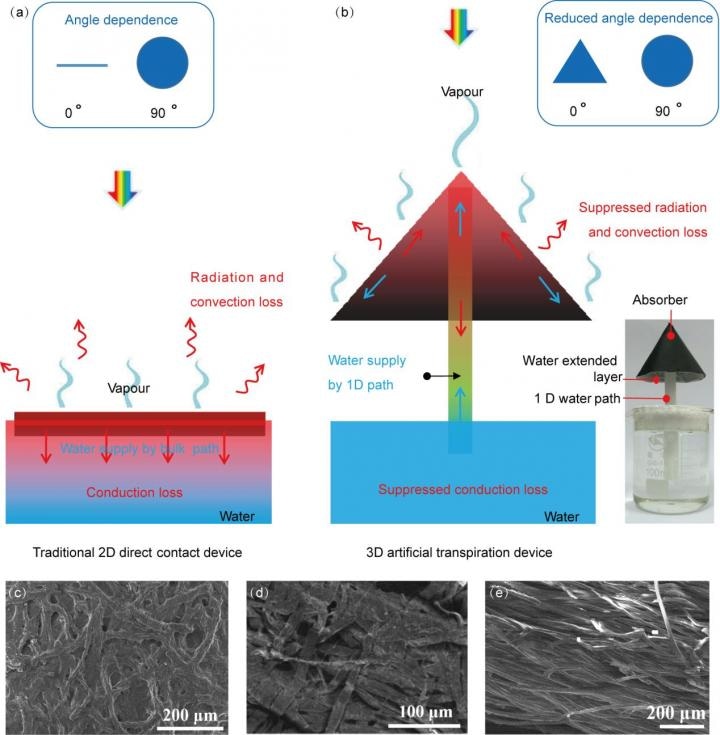Jun 2 2017
Solar steam and vapor generation are currently gaining increased attention with promising prospect in chemical purification, sterilization and desalination.
 CREDIT ©Science China Press
CREDIT ©Science China Press
Remarkable progress has been attained as absorber designs (PNAS, 110, 11677-11681 (2013), Nature Comm. 6, 10103, (2015), Nature Photonics, 10, 393-398, (2016)) and thermal management (Nature Comm. 5, 4449, (2014), Nature Energy 1, 16133 (2016), PNAS, 113, 13953, (2016)). However, in all of the earlier designs, losses related to conduction and convection start to become dominant because of the minimized optical loss and heat conduction loss. It is thus essential to simultaneously minimize the losses related to conduction, convection and radiation in order to enable widespread applications and attain optimum solar steam performance.
A new concept called, "Artificial Transpiration" with a graphene oxide based 3D hollow cone structure was described in research reported in the National Science Review (NSR) by Zhu group at Nanjing University, China. In this unique 3D artificial transpiration device, 1D water path was used to obtain efficient water supply and suppressed conduction loss at the same time. The convection and radiation losses were also minimized by lowering the absorber temperature because of its carefully designed morphology and increased evaporation surface area. This resulted in the device bringing about more than 85% solar vapor efficiency under one sun irradiation without optical supporting systems and external thermal insulation.
Another notable feature in this 3D artificial transpiration device refers to its ability to gather more sunlight all through the day, when compared to a 2D flat horizontal device. The sun regularly keeps changing its position in the sky in contrast to the fixed, simulated sun light used in the lab. Additionally, an increased portion of the sunlight (10-50%) is diffusive, approaching the receiver from all directions. The results demonstrate that a 3D absorption structure is capable of absorbing more light (about ~24%) than 2D devices, and this indeed is beneficial to real world applications.
It has also been demonstrated that the artificial transpiration device can help in bringing about efficient water treatment via two pathways, generating clean water condensed from vapor and recycling heavy metals. The water extracted from the condensed vapor is adequately pure so that it can meet WHO drinking water standards, even beginning with waste water containing high concentrations of Cu2+, Cd2+, Pb2+ and Zn2+ (5000 mg/L, 5000 times higher than WHO drinking water standards). In the meantime, it is also possible to recover heavy metals such as Cu and Au.
This artificial transpiration device is thus capable of providing a complementary approach for portable, effective and efficient solar water treatment.